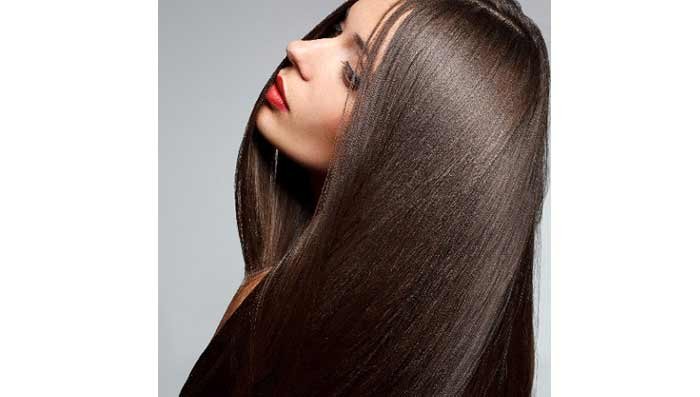In a world where sustainability and wellness are increasingly at the forefront, more people are turning to natural solutions for everyday beauty routines. One of the areas gaining attention is natural hair dye. Conventional hair dyes often contain harsh chemicals like ammonia, peroxide, and parabens that can damage hair and irritate the scalp. In contrast, natural hair dyes offer a gentler and eco-friendly way to achieve vibrant colors while maintaining healthy locks.
Why Choose Natural Hair Dye?
The reasons for switching to natural hair dye are numerous:
- Safer for Health: Many synthetic hair dyes contain chemicals that may cause allergic reactions, scalp irritation, or even long-term health concerns. Natural dyes, derived from plant-based ingredients, are free from harmful chemicals, making them a safer option for those with sensitive skin or allergies.
- Environmentally Friendly: The production and disposal of chemical-based hair dyes contribute to environmental pollution. Natural hair dyes are biodegradable and generally have a lower environmental footprint, helping you minimize your impact on the planet.
- Nourishing for Hair: Rather than stripping hair of moisture, natural dyes often contain ingredients that can help to nourish and condition hair. For example, henna, one of the most popular natural hair dyes, coats the hair shaft, providing shine and strength without drying it out.
- Customizable Shades: Natural dyes can provide a wide variety of shades, depending on how they are prepared and applied. You can easily achieve anything from rich brunettes and warm chestnut hues to fiery reds or deep black tones.
Popular Natural Hair Dye Ingredients
Several natural ingredients have been used for centuries to dye hair, each with its own unique properties:
- Henna: Henna is perhaps the most well-known natural hair dye, used in many cultures for centuries. It produces a rich red or auburn color and is often combined with other herbs to create a range of hues. Henna is also known for strengthening and conditioning hair.
- Indigo: Indigo is often used with henna to achieve darker shades, such as black or dark brown. Alone, it gives a deep blue-black tint. When used after henna, it can create natural-looking black or brunette tones.
- Coffee: Using strong brewed coffee as a rinse or in combination with other natural ingredients can enhance brown tones and add depth to dark hair. It’s a great option for refreshing brunette shades without the commitment of synthetic dye.
- Beet Juice: For those looking for a temporary pop of color, beet juice can give a subtle red or pink tint. It’s particularly effective for light hair and can be mixed with other juices like carrot for more vibrant results.
- Chamomile: Chamomile is a popular choice for those with blonde or light brown hair. This herb can gently lighten and brighten hair, giving it a sun-kissed glow. It works well as a rinse, especially when exposed to sunlight after application.
- Black Tea: Like coffee, black tea can darken hair over time. It can be used as a rinse to enhance natural brunette tones or cover greys gradually. Repeated applications are necessary for more noticeable results.
How to Use Natural Hair Dye
Applying natural hair dye can be different from using synthetic dyes, but the process is often more nourishing and less damaging:
- Preparation: Make sure your hair is clean and free of any styling products before applying natural dyes. This will help the color adhere better.
- Mixing: Follow the instructions for each natural ingredient. For instance, henna usually needs to be mixed with water and left to sit for several hours before application. Other ingredients like coffee or chamomile can be applied immediately after brewing.
- Application: Apply the dye to your hair in sections, ensuring even coverage. For best results, leave the dye on for the recommended time. Some natural dyes, like henna, may need several hours to develop fully.
- Rinse: Rinse your hair thoroughly after the dyeing process, avoiding the use of shampoo for at least 48 hours to allow the color to set.
The Drawbacks of Natural Hair Dyes
While natural hair dyes offer many benefits, there are a few drawbacks to keep in mind:
- Limited Color Range: Natural dyes generally don’t provide the same broad range of colors as synthetic dyes. Most natural dyes work best for achieving subtle shades or enhancing natural tones.
- Temporary Results: Many natural dyes, especially those like coffee or beet juice, are temporary and may wash out after several shampoos. Henna and indigo, however, can last longer and provide more permanent results.
- Time-Consuming Process: Natural dyes often require more time and preparation compared to their synthetic counterparts. For example, henna needs to be left on for several hours to achieve the desired color.
Conclusion
Natural hair dye is a wonderful alternative for those looking to avoid chemicals, embrace a healthier lifestyle, and reduce their environmental impact. With ingredients like henna, indigo, coffee, and chamomile, you can achieve beautiful, vibrant hair without sacrificing health or sustainability. While the process may require patience and experimentation, the benefits of using natural dyes far outweigh the drawbacks for many individuals. Give your hair a break from harsh chemicals and explore the world of natural hair coloring!











